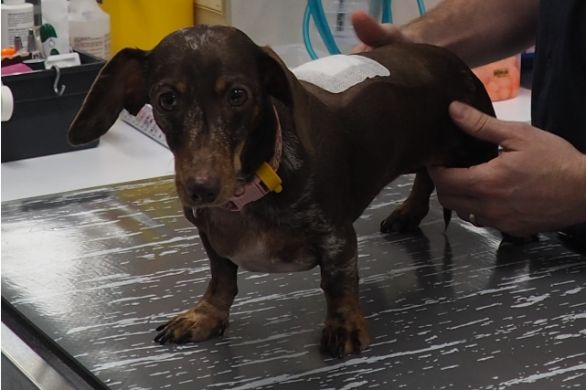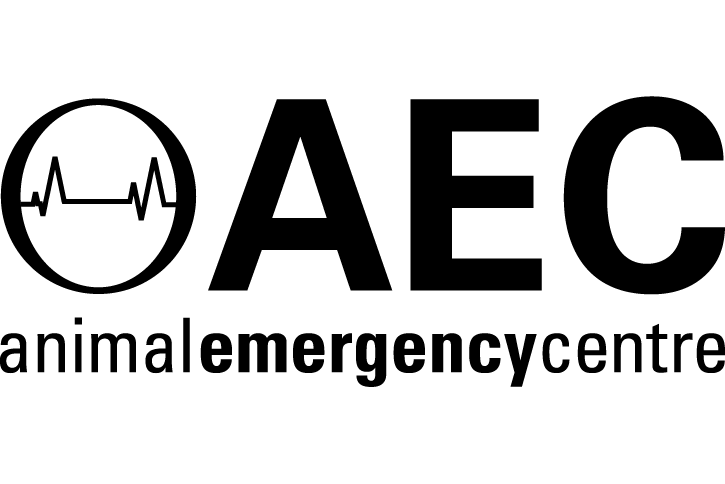At the Animal Referral Hospital in Sinnamon Park we unfortunately see a number of dogs every week with Intervertebral Disc Disease (IVDD).
Intervertebral discs are located between the vertebrae in the spine. Unfortunately, in certain dogs one or more of these discs undergo degenerative change from an early age. These degenerate discs can then bulge or rupture, resulting in compression and bruising of the spinal cord and nerves.
If left untreated dogs can have continued pain and permanent neurological dysfunction, including paralysis, hence why early detection is so important. Indeed, in a small percentage of dogs, the damage to the spinal cord can be so severe that they never regain the ability to walk or urinate.
The statistics
Some breeds are more susceptible to IVDD, with Dachshunds sadly having a reported 20-60% incidence rate throughout their life-time. Researchers have only recently isolated the gene responsible for IVDD in certain breeds. This gene is the same one that causes dwarfism in dogs. This is why the overwhelming majority of IVDD cases are seen in dogs with short limbs.
For other short-limbed dogs such as the beagle, Maltese Terrier, Shih Tzu, cocker spaniel, Lhasa apso, French bulldog, Pekingese and Staffordshire bull terrier the life-time rate of disease is approximately 10%, compared with 2% in other breeds.
80-90% of small dog IVDD cases occur in one of the discs of the mid-back, with the rest occurring in the neck or at the end of the spine.
The seriousness of a dog’s condition is measured in grades from 1-5, with 5 being the most serious. Dogs in the lower grades can recover with conservative management, including strict cage rest for a minimum of eight weeks and pain relief medication. They do however have a higher incidence of relapse at the problem disc site and the time it takes to improve and ongoing pain also need to be considered.
For dogs that undergo surgery, over 90% will return to normal function long term. Unfortunately, there are approximately 5% of dogs who never recover. In these uncommon cases, as long as a dog’s bowel and bladder are appropriately managed, they can live an acceptable quality of life, often achieving mobility with a cart. However this does require intense commitment on the owner’s part. Rarely, dogs with severe IVDD can develop a condition known as ascending/descending myelomalacia which is fatal.
Know the signs
Signs that a dog is suffering from IVDD include:
- behavioural changes, such as not wanting to jump or hiding
- intermittent or consistent pain
- arched back
- wobbliness or weakness in their back legs
- inability to walk
- inability to go to the toilet
- for dogs who have IVDD in their neck, weakness in their front legs and a reluctance to move their neck.
What to do if you suspect the worst
As an owner you know your dog the best. If you notice any of the above symptoms we advise you to seek urgent advice from your local vet. If it is after hours and your dog is deteriorating rapidly it is best to contact an emergency hospital.
Before you see a vet, it’s important to keep your dog quiet and not allow them to jump or play. It’s best to keep them in a crate or pen and carry them outside to go to the toilet. They should be carried to the car and properly restrained when driving to see your vet.
Mildred’s story
Mildred’s owners, Hugh and Sandra from Meadowbrook, had noticed some slight wobbliness in her back legs for a couple of weeks. When it worsened over a two day period they ended up at our 24 hour emergency hospital on a Sunday evening.
At this point Mildred had back pain and hind limb weakness and wobbliness. She was assessed as a grade 2 IVDD case, and admitted for overnight stay. By 8am the next morning she had deteriorated to a grade 3.
A CT scan was performed that demonstrated a large disc extrusion, causing approximately 60% compression of the spinal cord. Mildred was immediately taken to surgery, where a hemilaminectomy was performed to allow removal of the disc material and subsequent decompression of the spinal cord.
Impressively, Mildred was up and walking by herself the next day and was sent home three days later. She is now on eight weeks of strict crate rest, which means she can only leave the crate to be carried to the toilet.
Mildred’s owners report she is doing very well at home. She will be back in for a recheck at eight weeks and then returned to the care of her local vet.
.png)









